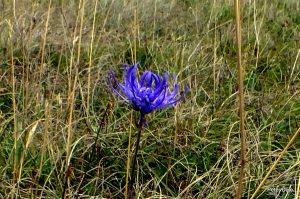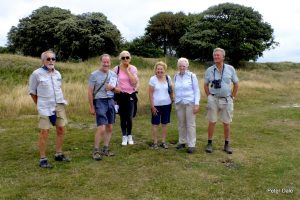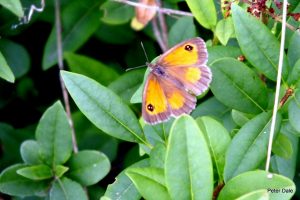Parish Magazine Article September 2022
Great Tit by Michael Blencowe of the Sussex Wildlife Trust
Just for the record; I’ve never trusted them. Unlike all the other familiar, friendly faces on my back garden bird table there’s just something about the Great Tit that’s always made me suspicious. Perhaps it’s my mistrust of uniforms. The Great Tit’s smart plumage with a collar, black tie and a glossy black cap makes them look too official, too authoritative. And that bright yellow chest? Far too garish for the garden.
Their behaviour isn’t exactly endearing either. Great Tits are the bullies on the bird table. They’ll aggressively assert their authority and violently peck at other birds as they plunder the peanuts. When a house-hunting Great Tit can’t find a suitable hole to nest in, it’ll simply evict a Blue Tit and move in.
Their dominance is also heard in spring when their two-note song, “Tea-cher! Tea-cher! Tea-cher!” rings out through our woodlands. It was this “Tea-cher!” that taught me my first lesson in bird song identification; an easily recognisable two-note war cry used to proclaim the tit’s territory. But I was soon to learn that not everything was how it seemed. Each male actually has an average of four different songs, which can be sung at three different tempos. This varied repertoire is a sly Beau Geste trick employed to trick other Great Tits into thinking that a woodland is more crowded than it really is. The birds who know the most tunes secure larger territories and breed more successfully. And it’s a trick that fools me each year too; if I don’t recognise a bird call in the woods it’s always a Great Tit.
Through aggression and deceit, these birds have successfully established an empire that spreads from England to China. And it’s from the far-flung corners of this empire that we’ve recently received reports of some rather worrying behaviour. From Finland came news of a group of Great Tits changing their vegan diet of seeds and nuts to something much more meaty: other birds. In Hungary, scientists made the chilling discovery of a population of Great Tits which have developed a taste for the brains of hibernating bats. Sure, these are isolated incidents at the moment but with human society plunging rapidly towards the abyss and an army of Great Tits acquiring a taste for blood and brains, is it unreasonable to hypothesise a post-apocalyptic future where humans are at the mercy of plagues of zombie Great Tits? Close your windows people – they’re coming for us!
Sussex Wildlife Trust is an independent charity caring for wildlife and habitats throughout Sussex. Founded in 1961, we have worked with local people for over half a century to make Sussex richer in wildlife. Please consider supporting our work. As a member you will be invited to join Michael Blencowe on our regular wildlife walks and also enjoy free events, discounts on wildlife courses, Wildlife magazine and our Sussex guide book, Discovering Wildlife. It’s easy to join online at sussexwildlifetrust.org.uk/join



